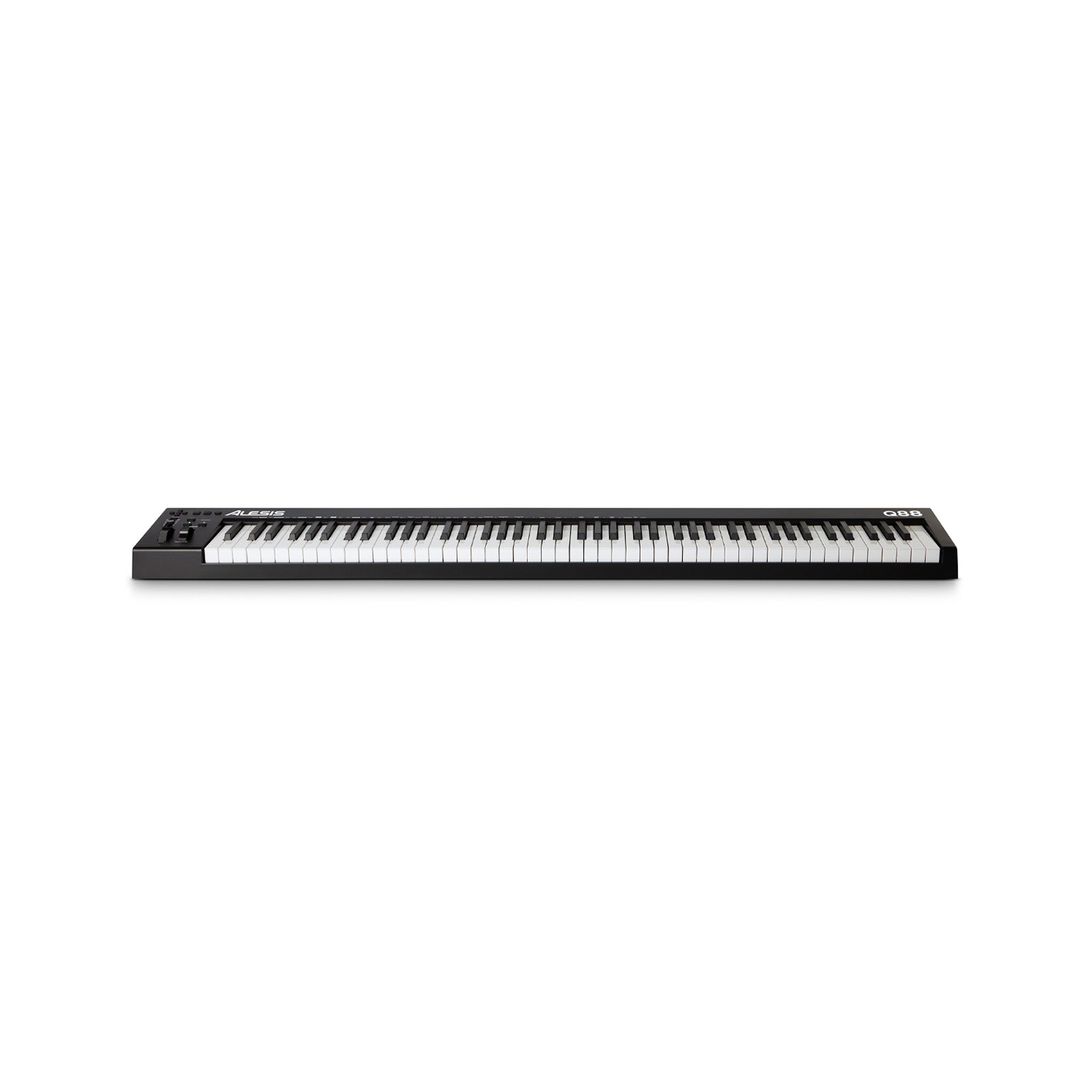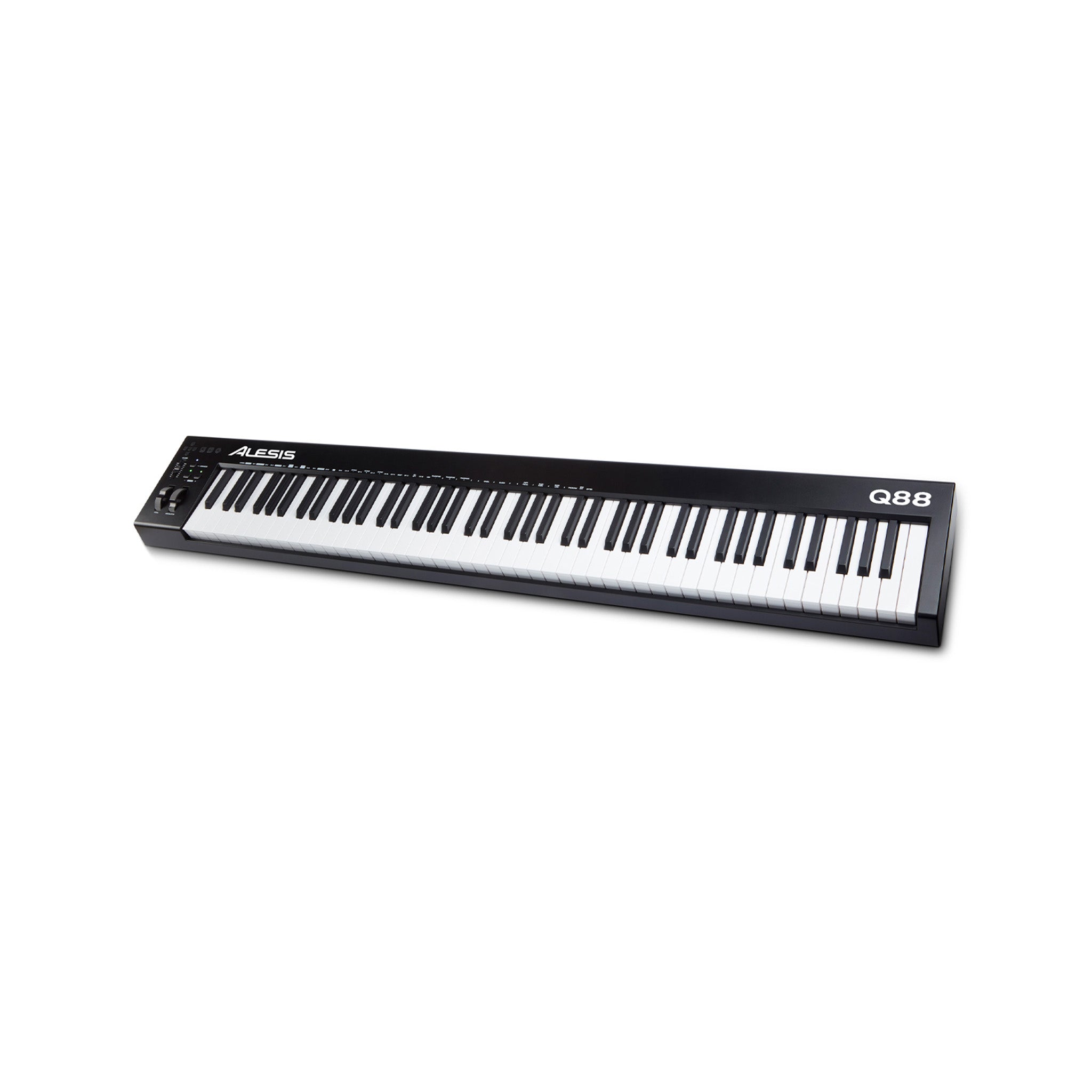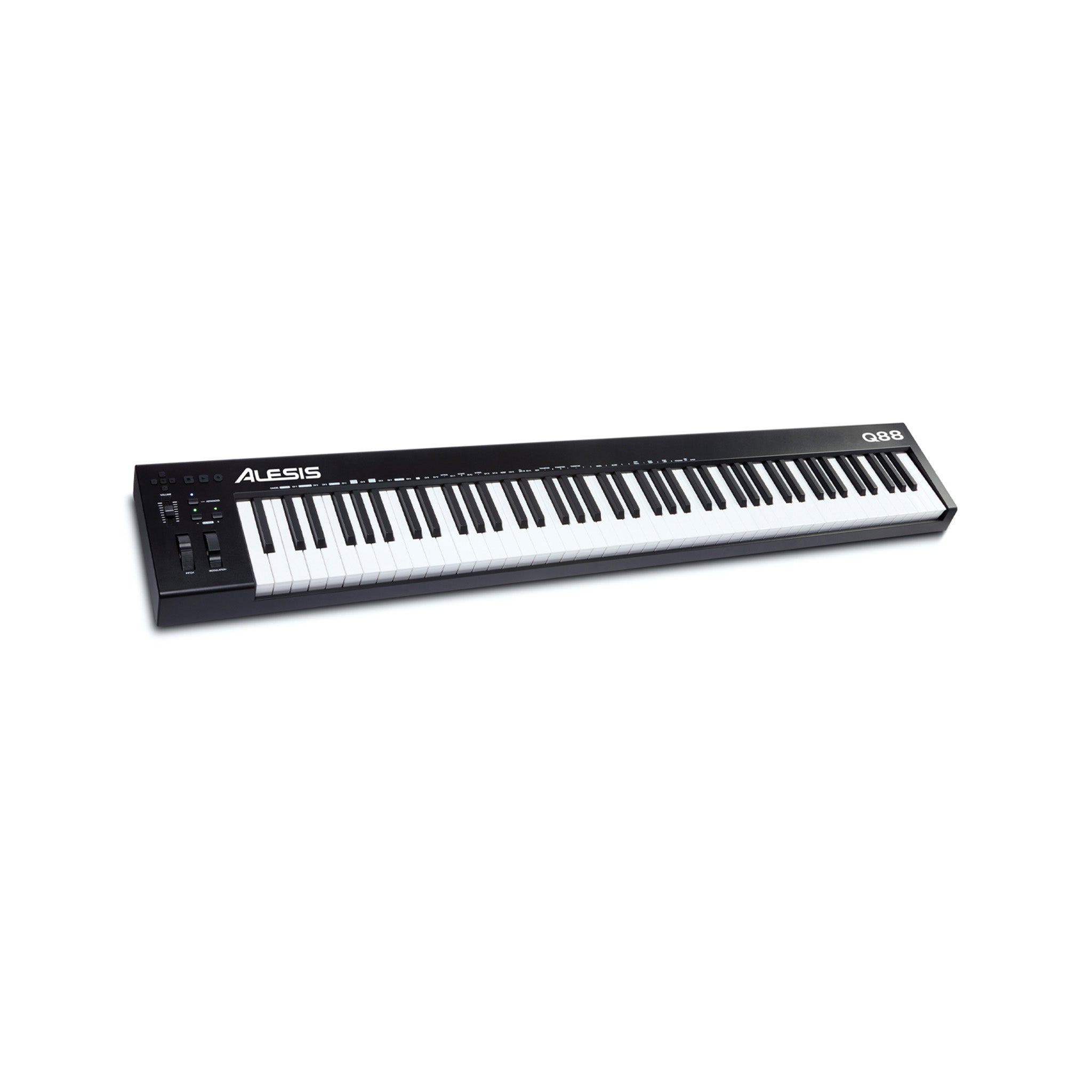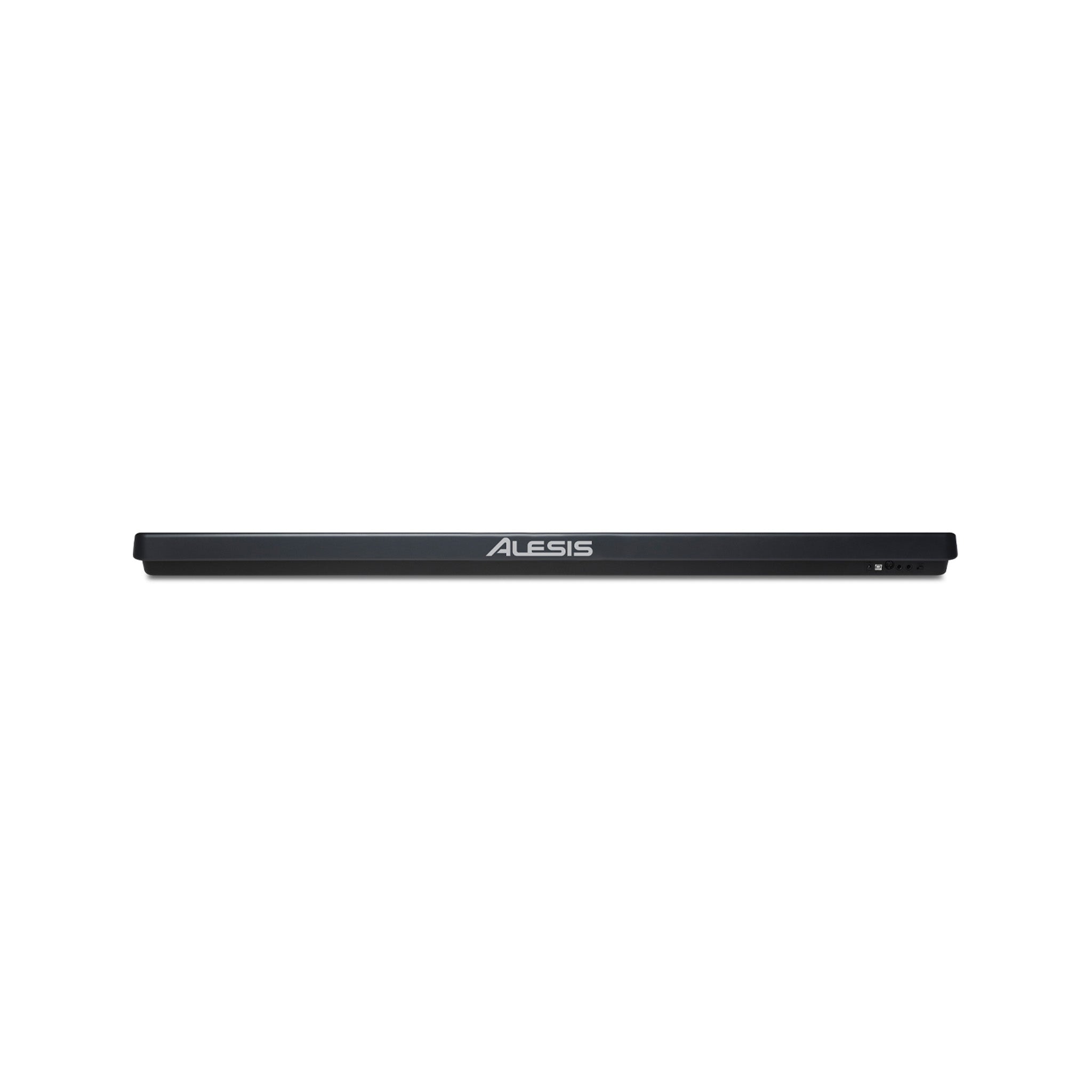When the urge to make music strikes, having the right tool is crucial. Enter the Alesis Q88 MKII, a straightforward MIDI controller with 88 full-size, velocity-sensitive, synth-action keys. This USB bus-powered controller is your ticket to a unique performance. It comes with Octave and Transpose buttons to cover the entire piano range, Pitch Bend and Modulation wheels for more expression, and Transport buttons to control your favorite software or DAW. There's also a Sustain Pedal input and a re - assignable slider for quick parameter control. Plug it into your PC, Mac, or iOS device, and instantly turn it into a powerful MIDI production tool. Features include 88 full - size, semi - weighted keys, easy access to the full piano range, enhanced expression with wheels, software control buttons, a volume slider for quick operation, pedal inputs, 5 - PIN MIDI output for standalone use (power supply sold separately), plug - and - play for Mac or PC, compatibility with iOS devices (adapter sold separately), a lightweight and portable design, and a premium software bundle. Specifications state minimum system requirements of a standard USB 2.0 port, Windows 8 (x64), and MacOS 10.13.6. The package includes the Q88 MKII, USB Cable, Software Download Card, Quickstart Guide, and Safety & Warranty.




Using the Alesis Q88 MKII is easy. First, connect it to your PC, Mac, or iOS device. For Mac or PC, it's plug - and - play. If you're using an iOS device, you'll need to buy an Apple Lightning to USB Camera Adapter. Once connected, you can start making music right away. Use the Octave and Transpose buttons to play different notes across the full piano range. The Pitch Bend and Modulation wheels add more feeling to your music. When performing or recording, the assignable volume slider lets you quickly control the volume. You can also connect pedals to the 1/4” TS sustain pedal and 1/4' TRS expression pedal inputs for more control. As for the 5 - PIN MIDI output, you'll need to buy a separate power supply if you want to use it for standalone operation. When it comes to maintenance, keep it clean and dry. Avoid exposing it to extreme temperatures or humidity. If you're not using it for a long time, store it in a safe place. And don't forget to refer to the included Quickstart Guide for any initial setup questions.